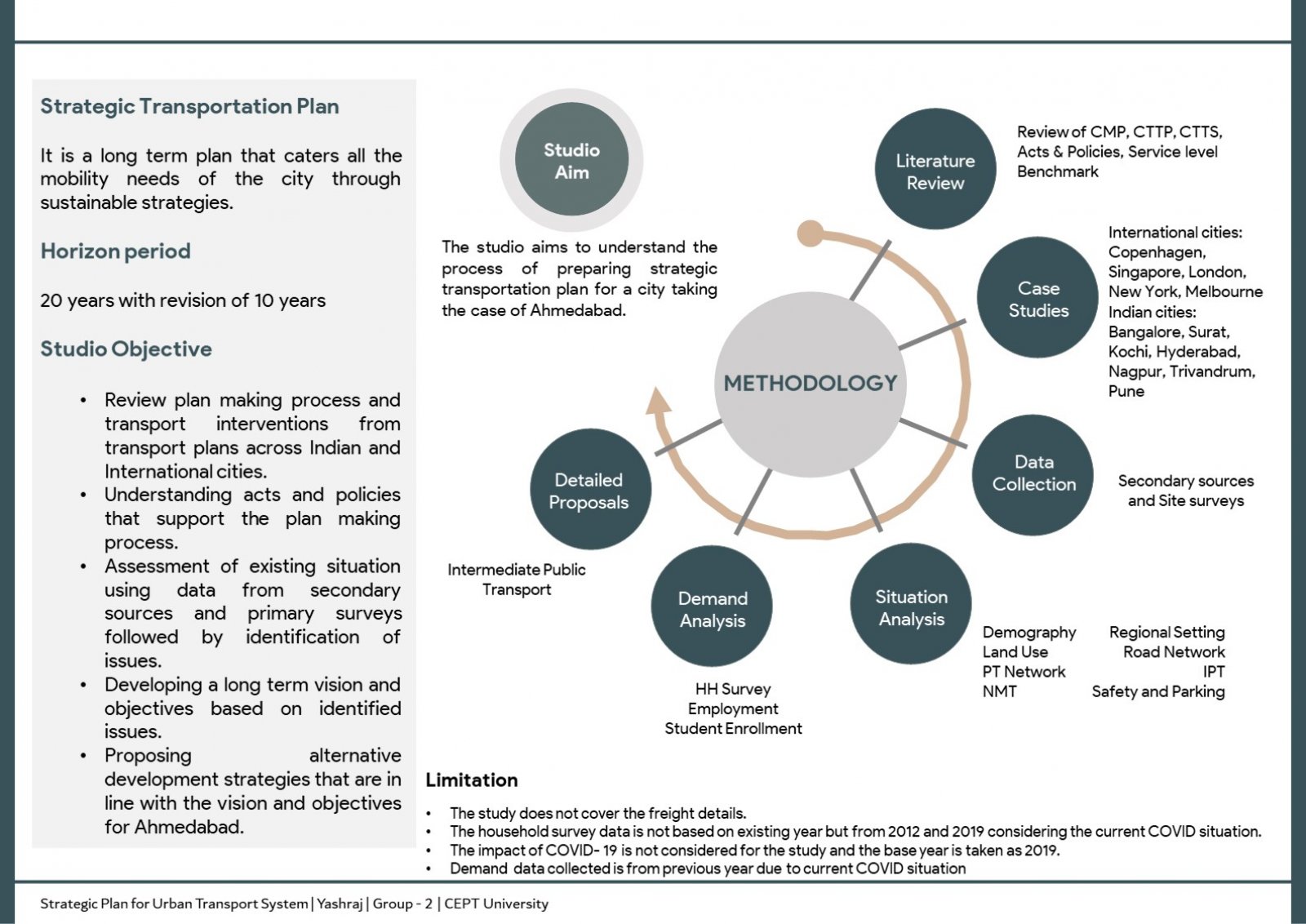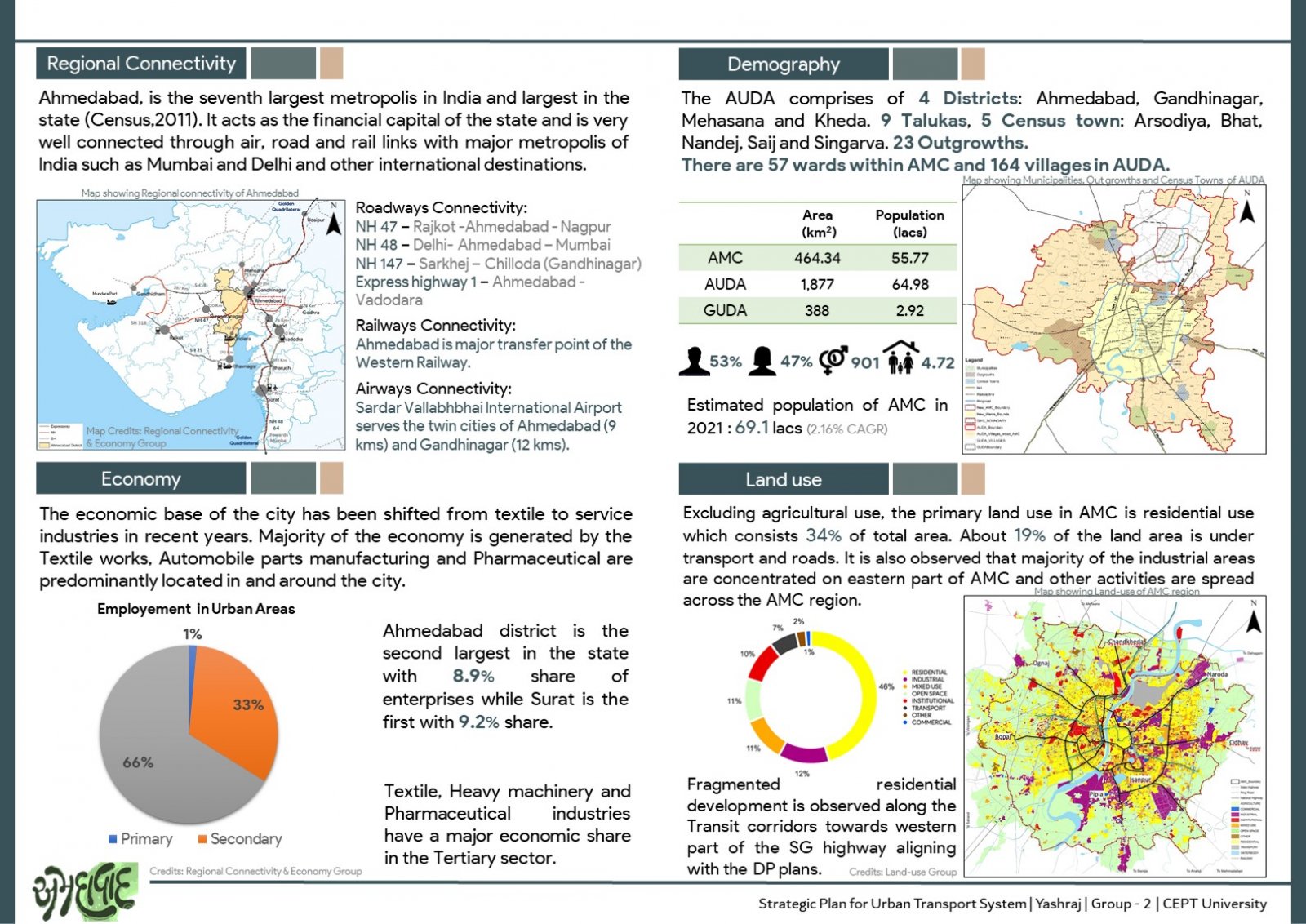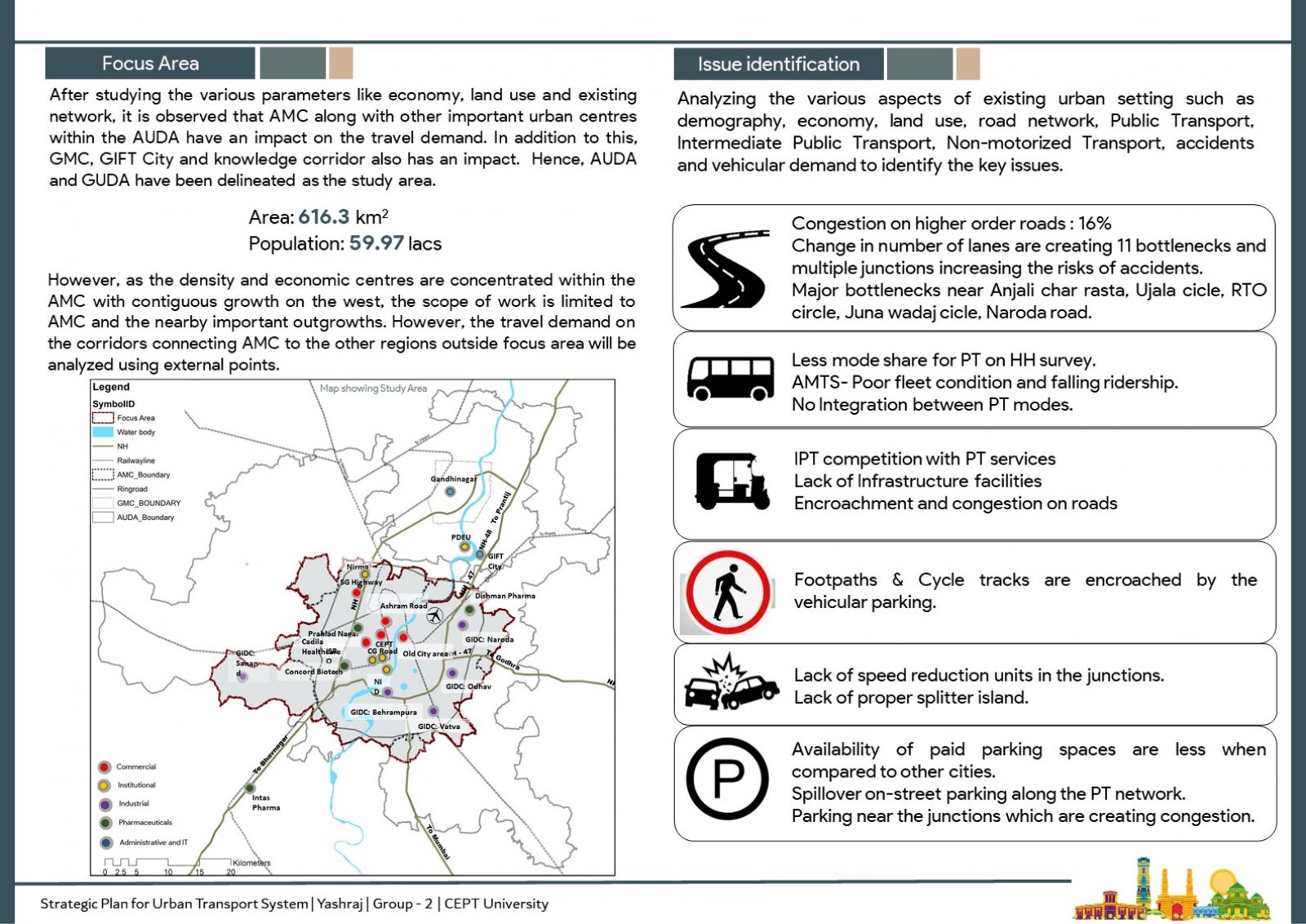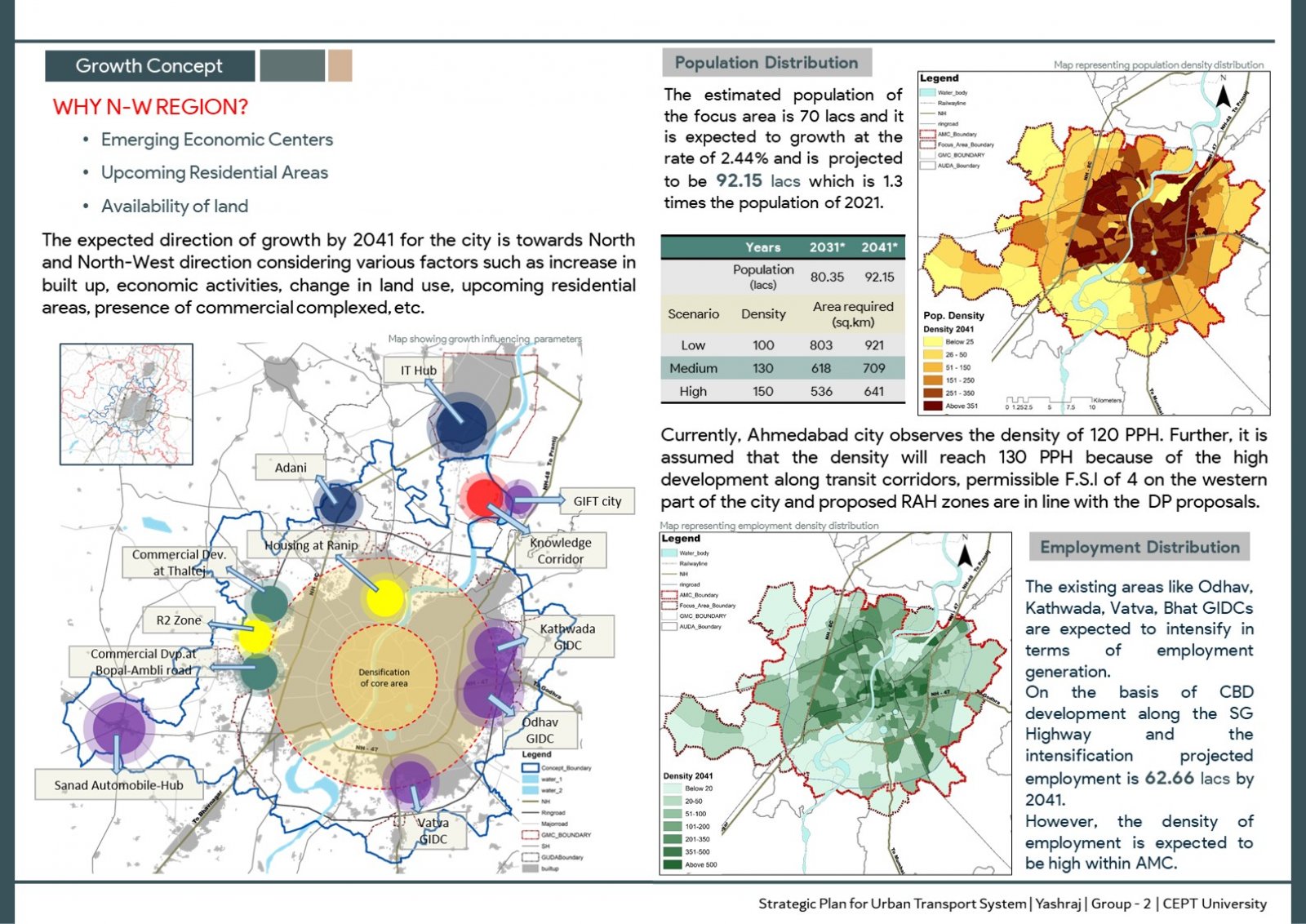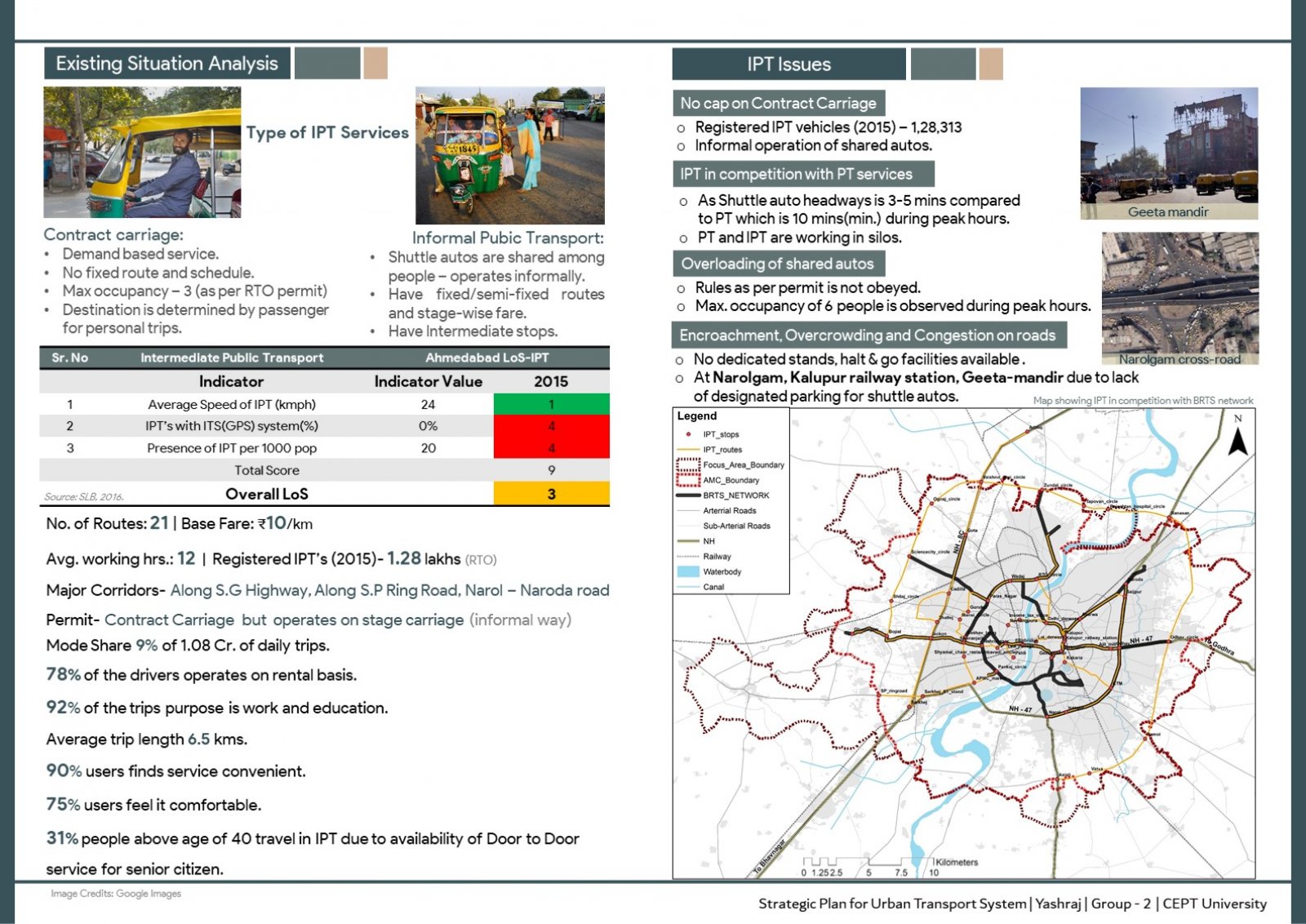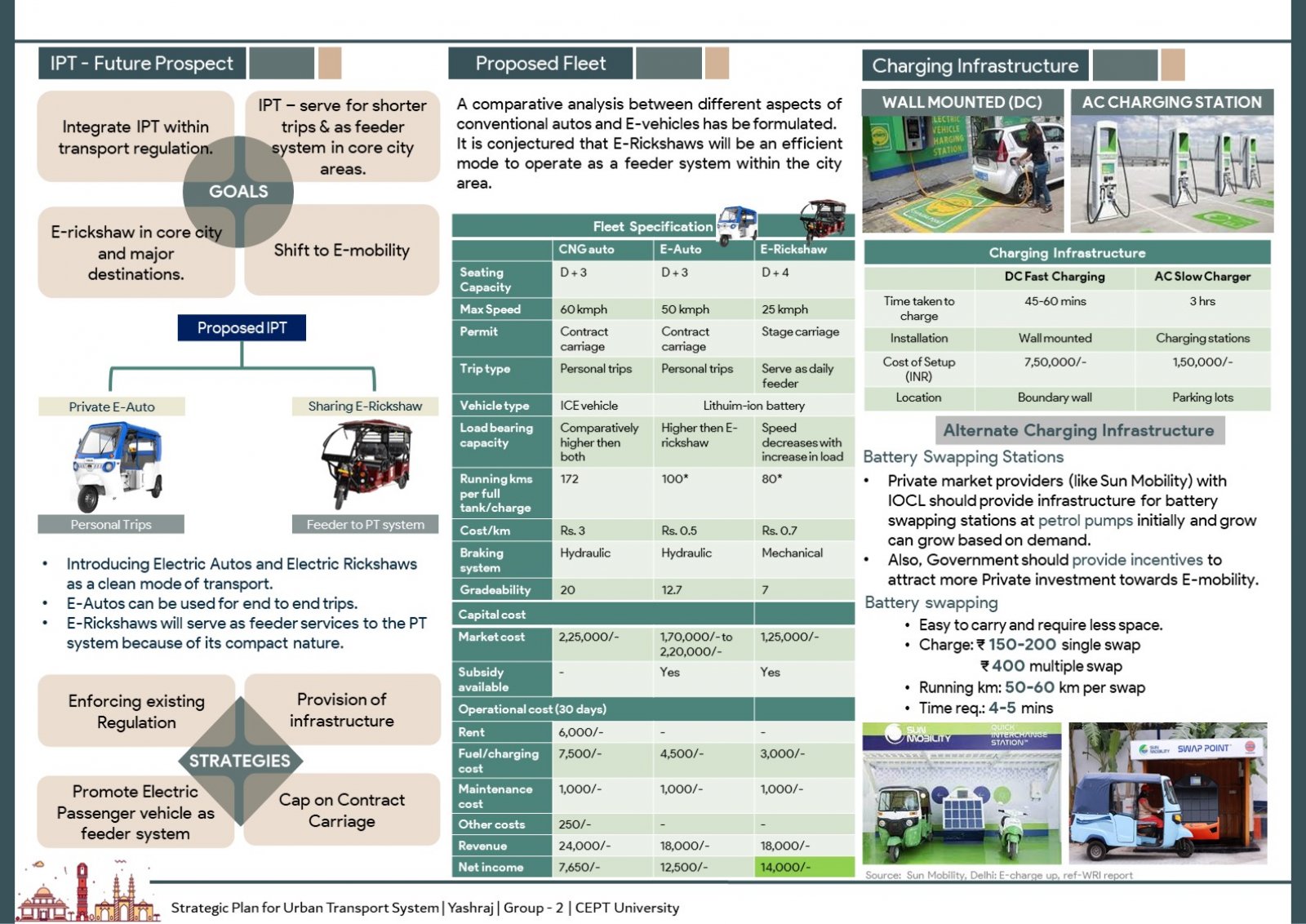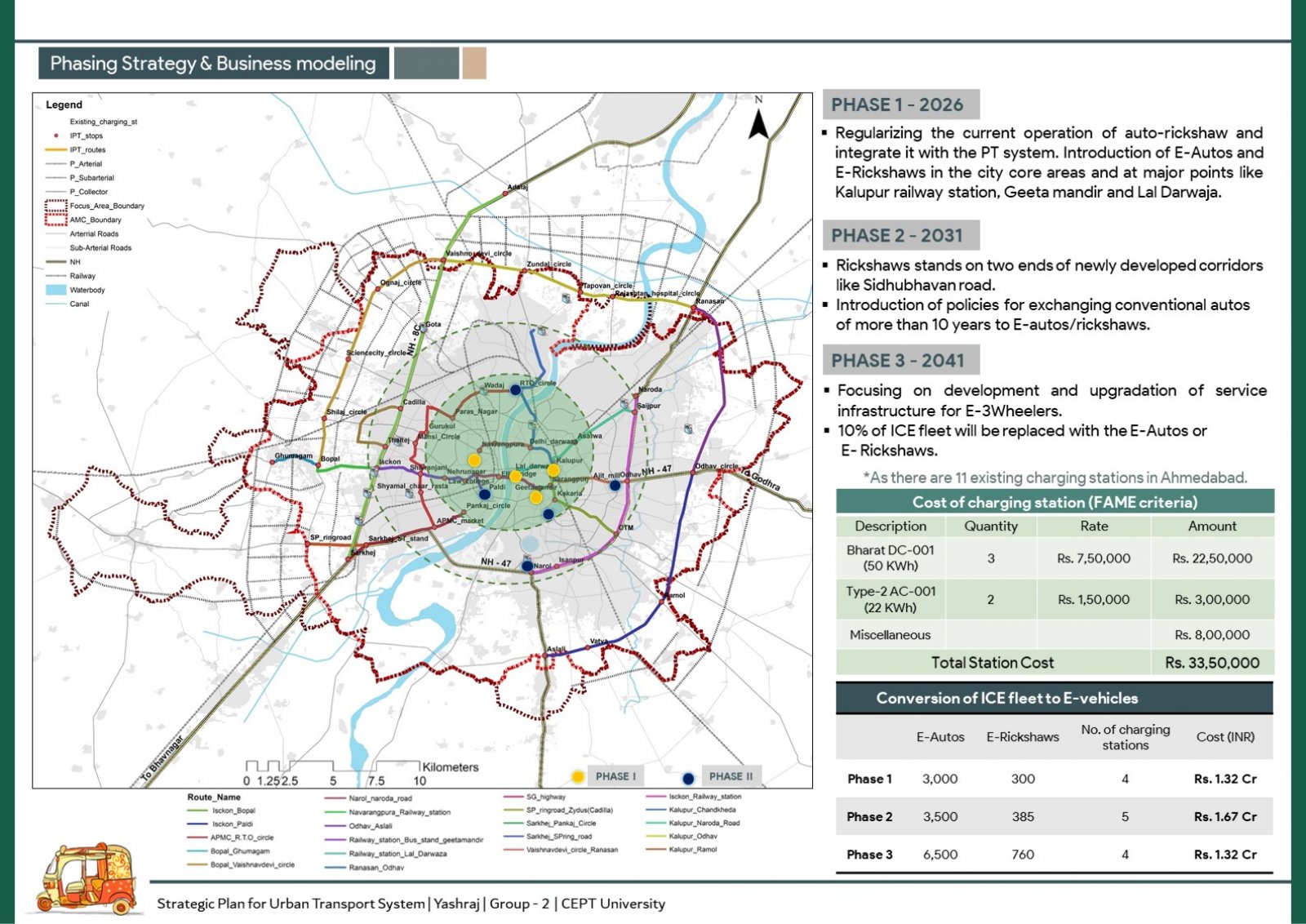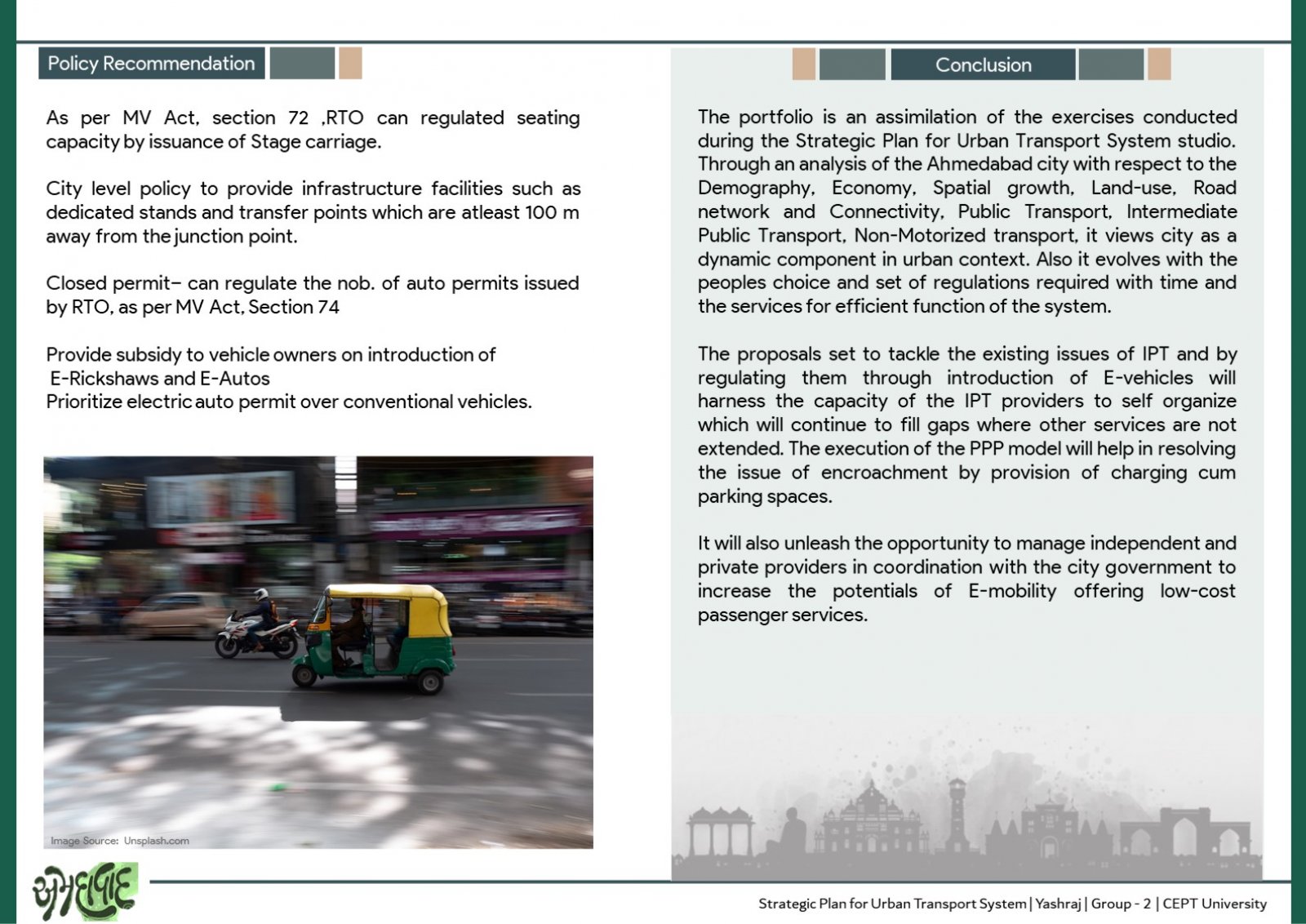Your browser is out-of-date!
For a richer surfing experience on our website, please update your browser. Update my browser now!
For a richer surfing experience on our website, please update your browser. Update my browser now!
The studio aims to understand the process of preparing a strategic transportation plan for the case of Ahmedabad. In a rapidly growing city like Ahmedabad, population growth has led to improvements in infrastructure demanding immense public transportation services. In the cities, formal public transportation services are often unable to cater to the demand leading people to rely on alternative modes like Auto-rickshaws, taxis, cabs, etc., for their daily transit needs. These alternative modes act as the Intermediate Public Transport or Para Transits. They perform a supportive function and offer last-mile connectivity to public transport services to bridge the gap between the public and private modes. This portfolio closely looks at the significance of the IPT modes within the transport sector of Ahmedabad in terms of its role, benefits, issues, existing situation analysis, and need for the projects related to the IPT, to optimize the usage of fleets for providing better last-mile connectivity and upgrading fleets to electric vehicles and reduce mode of IPT to 5% from 9% promoting green mobility by 2041.
